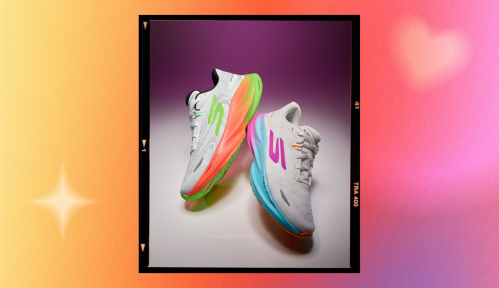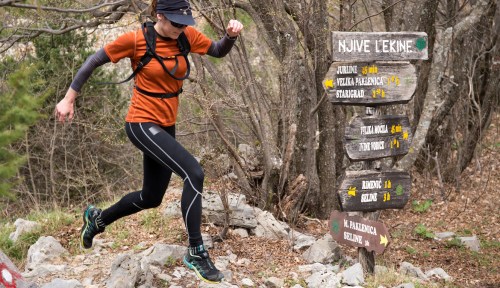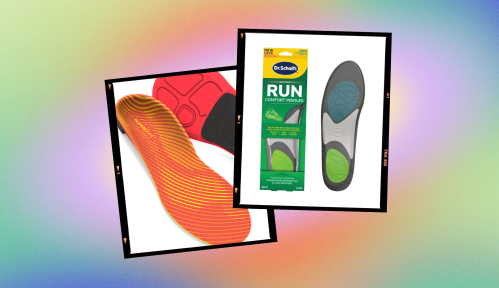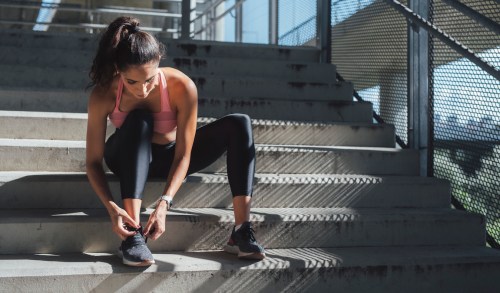Our editors independently select these products. Making a purchase through our links may earn Well+Good a commission
Yes, You Need Different Running Shoes in the Winter. Here Are 5 Podiatrist-Recommended Pairs
A podiatrist breaks down what to look for in winter running shoes, and five of the best options to consider.
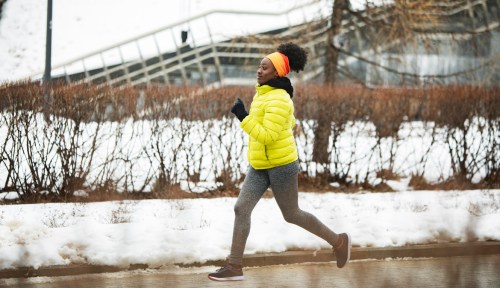
Running in the winter is undeniably challenging. Between the short hours of daylight and the bitterly cold temperatures, just getting yourself out the door can be a feat in itself.
Experts in This Article
board-certified podiatrist, foot and ankle surgeon
Add in the potential hazards and increased physical demand of running on snow or ice, and it’s clear that winter running is an extra-taxing workout. But just because you have the grit and determination to get in your miles outside doesn’t mean your regular running shoes are up to the task. Winter sneakers need to be able to stand up to the elements of the season—the cold temperatures, snow, sleet, freezing rain, and icy roads—and keep you safe through it all.
What should you look for in winter running shoes?
If you’re running on snowy paths, grab a pair of trail shoes, says podiatrist Mark Mendeszoon, DPM, a partner at Precision Orthopaedic Specialties Inc., and the owner of Achilles Running Shop in Ohio. “These shoes generally have a water-resistant or waterproof upper to keep the foot dry,” he explains.
Snow or no snow, anyone heading out in cold temps will want to make sure there’s ample room in the toe box to make space for thick, warm winter running socks while still having enough room for your toes to move. Look for insulated uppers (rather than the breathable mesh upper you might want in a summer running shoe) to help keep your feet warm. Another key feature is high-grip soles with good traction to minimize slipping or falling on any patches of ice, wet, or snowy roads.
You could also look into a “snow track” device to prevent slips, like YakTrax or other microspikes that you can attach to the soles of your shoes for better traction, says Dr. Mendeszoon. But keep in mind that you’re only partially “winterizing” your running shoes this way since these won’t help make your shoes any warmer. (They will also wear down quickly if you’re running on them anywhere without snow.)
A podiatrist’s winter running shoe recs
Dr. Mendeszoon suggests a few specific running shoes that have the features you need in the winter. “All of these shoes are outfitted with the proper materials to help assist with preventing slips and falls, providing insulation for the feet, and keeping the feet dry,” he says.
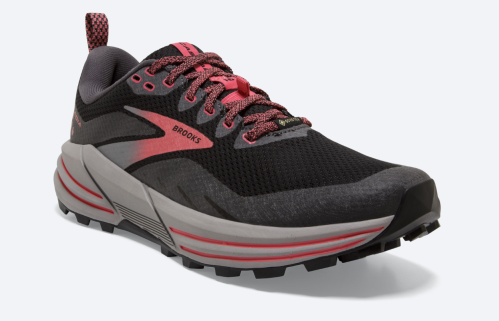
Brooks Cascadia 16 GTX — $160.00
Pros:
- A robust GORE-TEX upper keeps water and snow out.
- Superior traction and grooves in the midsole allow for enhanced adaptability on rough terrain, which is great for snowy and icy days.
Cons:
- Some reviewers report that the fit is on the smaller, narrower side, with stiff material.
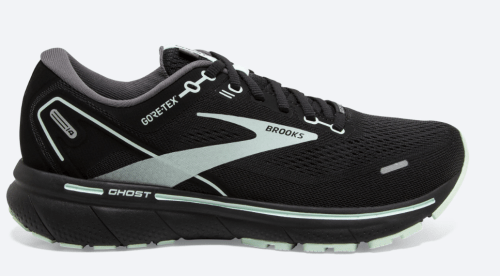
Brooks Ghost 14 GTX — $160.00
Pros:
- Well-cushioned.
- The waterproof GORE-TEX upper will keep your feet dry.
Cons:
- Some reviewers say that these wear down quickly.

Hoka Speedgoat 4 GTX — $128.00
Originally $160, now on sale for $128
Pros:
- A wide forefoot offers plenty of room for thick socks.
Cons:
- The stiff tongue design can scrape the front of your ankle, according to some reviewers.
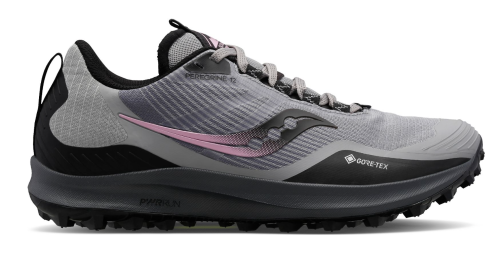
Saucony Peregrine 12 GTX — $150.00
Pros:
- At 9.2 ounces, these are lighter weight than some other winter running shoes.
- Peregrines are renowned for their great traction on a variety of surfaces—wet and dry.
Cons:
- Reviewers report that the toe box runs tight.

Nike Pegasus Trail 3 GTX — $129.00
Originally $160, now on sale for $129
Pros:
- The cushion offers a springy ride.
- The ankle design helps keep small rocks and dirt from getting in the shoe.
Cons:
- The waterproof GORE-TEX wears down quickly, according to some reviewers.
The limits of winter running shoes
Yes, wearing proper winter running shoes can help protect your feet from the elements. “However, these shoes may be a little bit more stiff and heavier than a typical running shoe,” Dr. Mendeszoon notes. “In some occasions, these shoes are not as flexible and may not be as lightweight or comfortable as their non-winter shoe counterparts.”
Winter running shoes also require a bit more care to make sure they keep you safe mile after mile. “It is important to lace and unlace your shoes, and make sure that when you take them off, they’re in an area of air current to keep them dry,” says Dr. Mendeszoon. He suggests spraying them with a disinfectant to try to minimize bacteria, viruses, and fungi. And to keep a close eye on your mileage: “Most shoes that get to 500 miles may start to break down, and particularly with winter shoes, the outer grips may flatten out, which can cause slipping,” he says.
Also keep in mind that protecting yourself from the elements extends beyond just having the proper shoes. Think: insulated socks and appropriate gear like a hat and gloves, says Dr. Mendeszoon. “It’s also very important to keep hydrated,” he says. “Even though it’s cold, we lose a lot of sweat and don’t want to develop any type of hypothermia by neglecting hydration.”
Sign up for the Well+Good SHOP Newsletter
Get exclusive deals on wellness, beauty, fitness, and food products that have been hand-picked by our editors.
Got it, you've been added to our email list.

